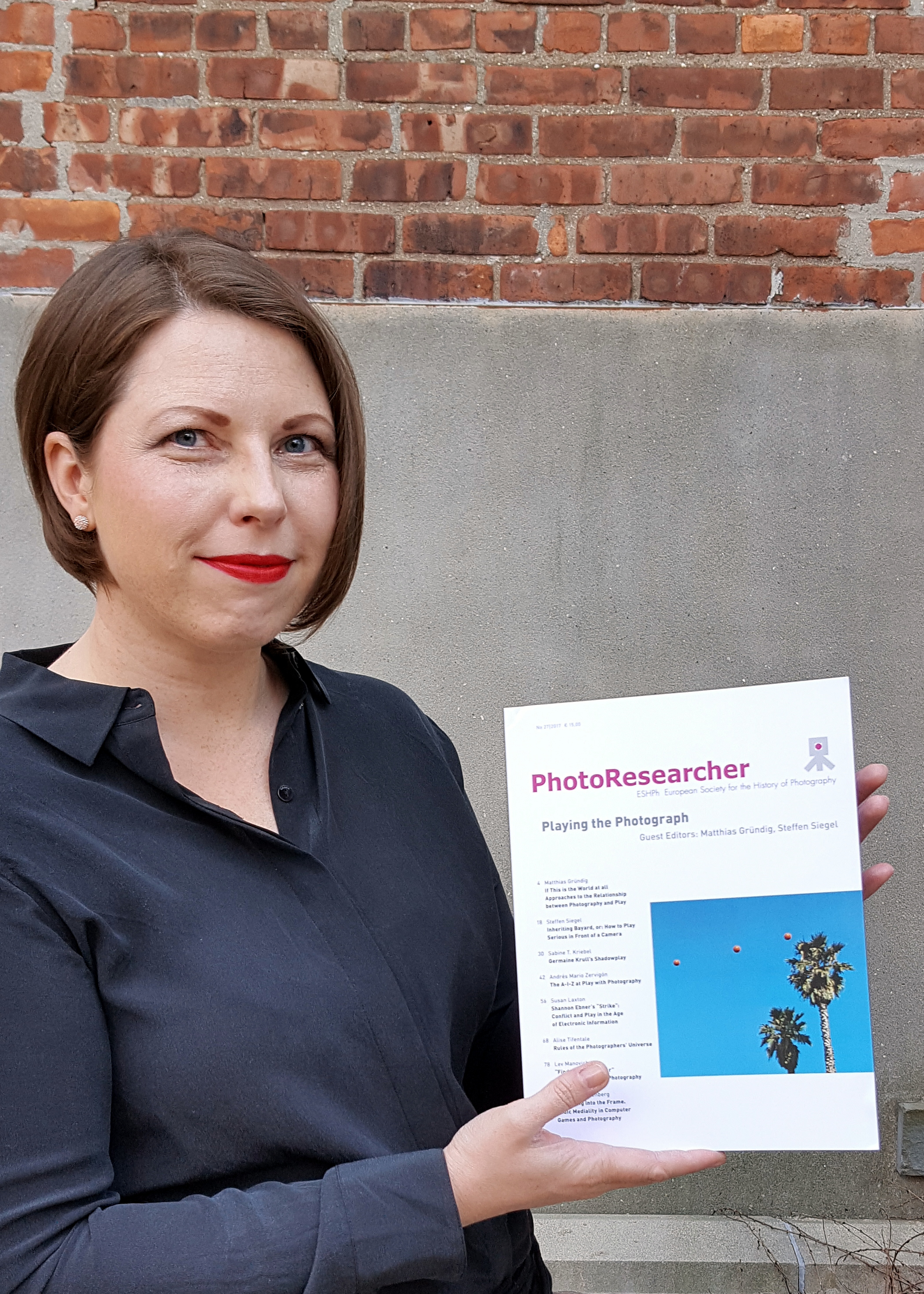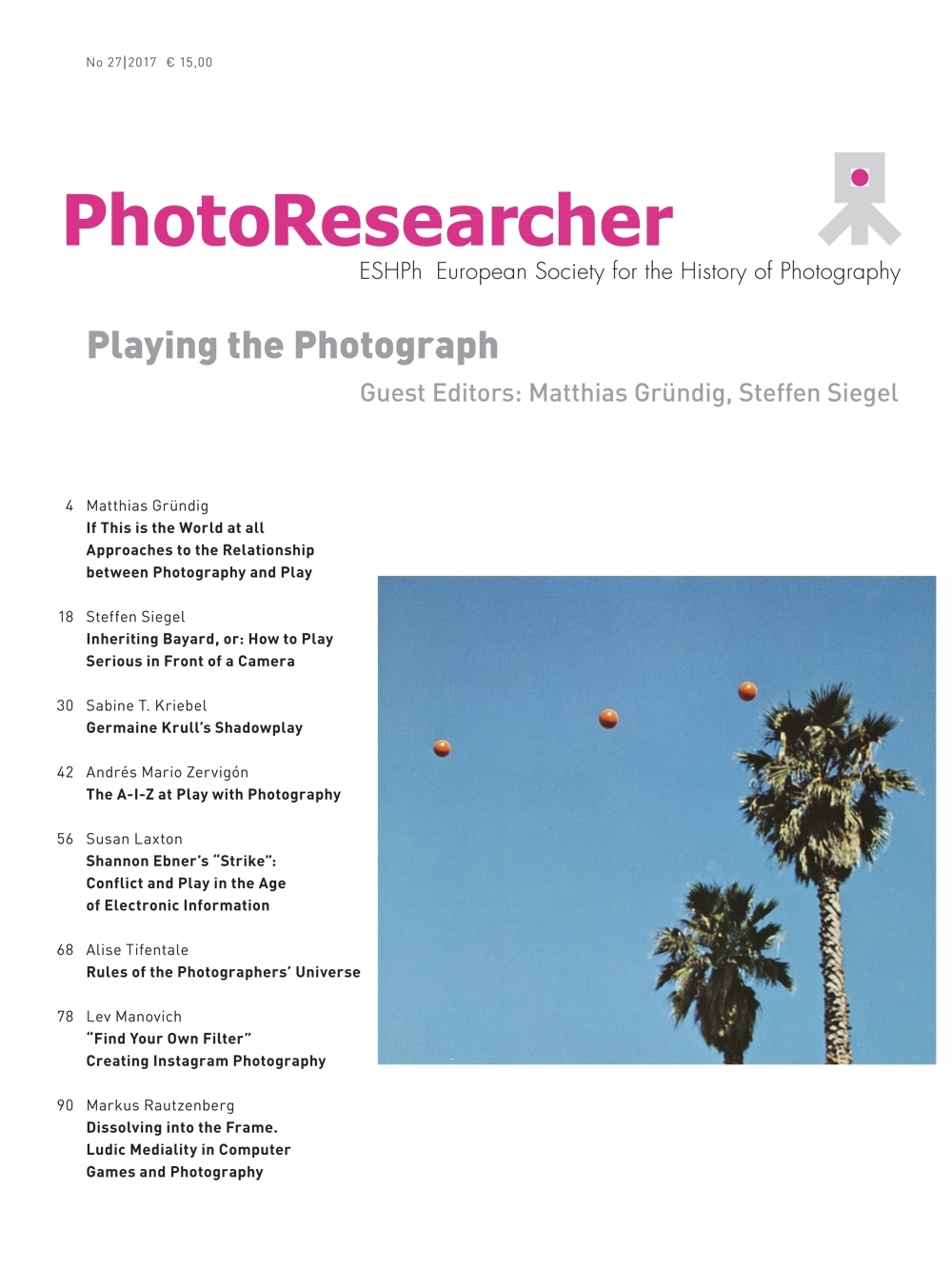“Rules of the Photographers’ Universe,” Photoresearcher (journal of the European Society for the History of Photography), No. 27 (April 2017), pp.68-77. Special issue "Playing the Photograph," edited by guest editors Matthias Gründig and Steffen Siegel.
With the April 2017 issue of Photoresearcher (the journal of the European Society for the History of Photography) which features my latest research article "Rules of the Photographers' Universe." Photo: Hon Sun Lam.
The purpose of this article is to add a historical perspective to the current debates about social media photography by offering some concepts that connect today’s culture with pre-internet and pre-digital photography.
I introduce the concepts of competitive photography and the photographers’ universe which I have developed while researching the work of a global organization of photographers—the International Federation of Photographic Art (Fédération internationale de l'art photographique, FIAP) between 1950 and 1965. These two concepts reveal those social functions of photography which have been established in earlier historical moments and which have continued to be relevant throughout the second half of the twentieth century. The work of these functions in contemporary culture, however, is obscured by the accelerated rate of all kinds of technological innovations which urge the researchers to focus on their newness.
In addition, I introduce the concept of the networked camera which characterizes contemporary social media photography and emphasizes its differences from earlier modes of making, sharing, and viewing photographs. I formulated this concept while studying large datasets of photographs shared on Instagram (a popular online image-sharing platform whose major content is user-generated photographs) in research projects such as Selfiecity (2014), Selfiecity London (2015),[i] and The Exceptional and The Everyday: 144 Hours in Kyiv (2014).[ii] These projects were carried out under the guidance of Lev Manovich in his lab Software Studies Initiative, based in the Graduate Center of City University of New York.[iii]
All three concepts—competitive photography, photographers’ universe, and networked camera—can help to explore the underlying function of photography as a creative medium throughout the second half of the twentieth century.
[i] Lev Manovich, Moritz Stefaner, Mehrdad Yazdani, Dominius Baur, Daniel Goddemeyer, Alise Tifentale, Nadav Hochman, and Jay Chow, Selfiecity (2014), http://selfiecity.net, and Selfiecity London (2015), http://selfiecity.net/london.
[ii] Lev Manovich, Mehrdad Yazdani, Alise Tifentale, and Jay Chow, The Exceptional and The Everyday: 144 Hours in Kyiv (2014), http://www.the-everyday.net/.
[iii] For a further discussion on the findings of these research projects, see, for example, Lev Manovich and Alise Tifentale, ‘Selfiecity: Exploring Photography and Self-Fashioning in Social Media’ in: David M. Berry and Michael Dieter (eds.), Postdigital Aesthetics: Art, Computation and Design, London: Palgrave Macmillan 2015, 109–122; and Alise Tifentale, ‘Art of the Masses: From Kodak Brownie to Instagram,’ Networking Knowledge vol. 8, no. 6, 2015.
Montage of selected covers (January 1955–June 1966) of the international photography magazine Camera, since 1952 the official magazine of the International Federation of Photographic Art (Fédération internationale de l'art photographique, FIAP). Camera was published monthly in Lucerne, Switzerland, by C. J. Bucher publishing house in English, French, and German, and distributed globally. Thumbnails in this montage are displayed in chronological order from top left. Visualization by Alise Tifentale.

